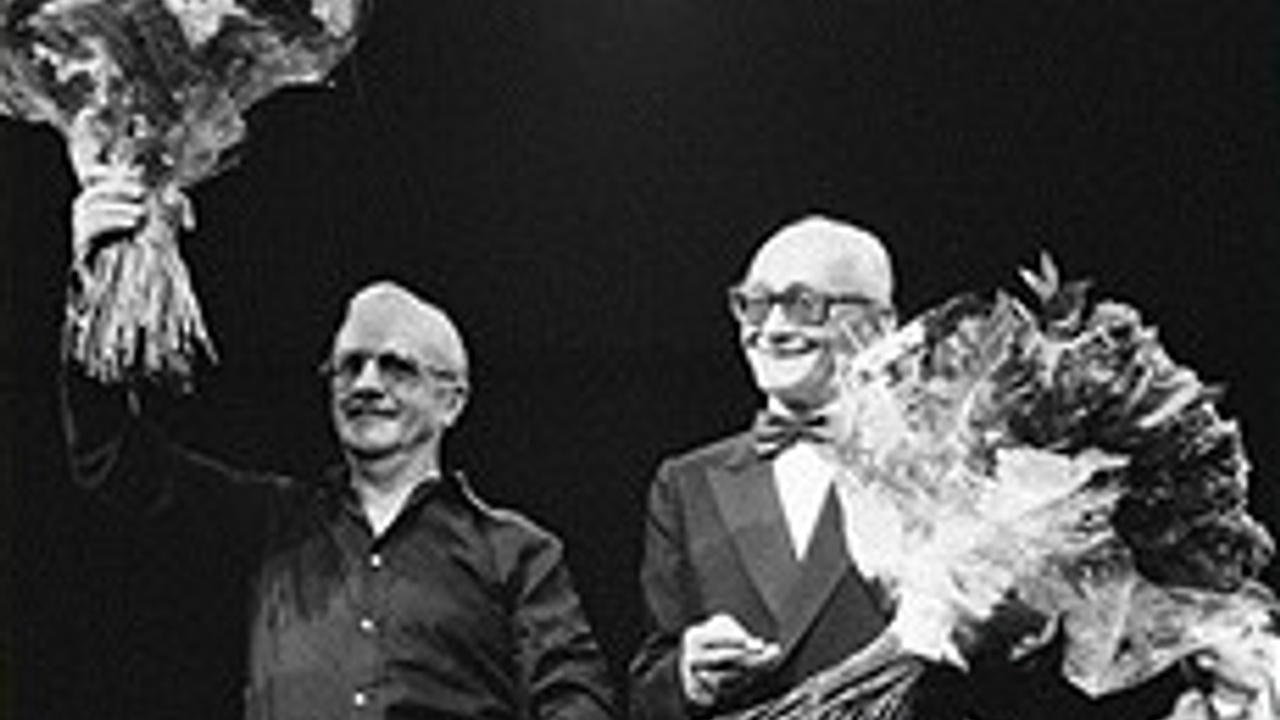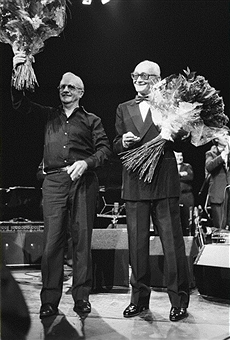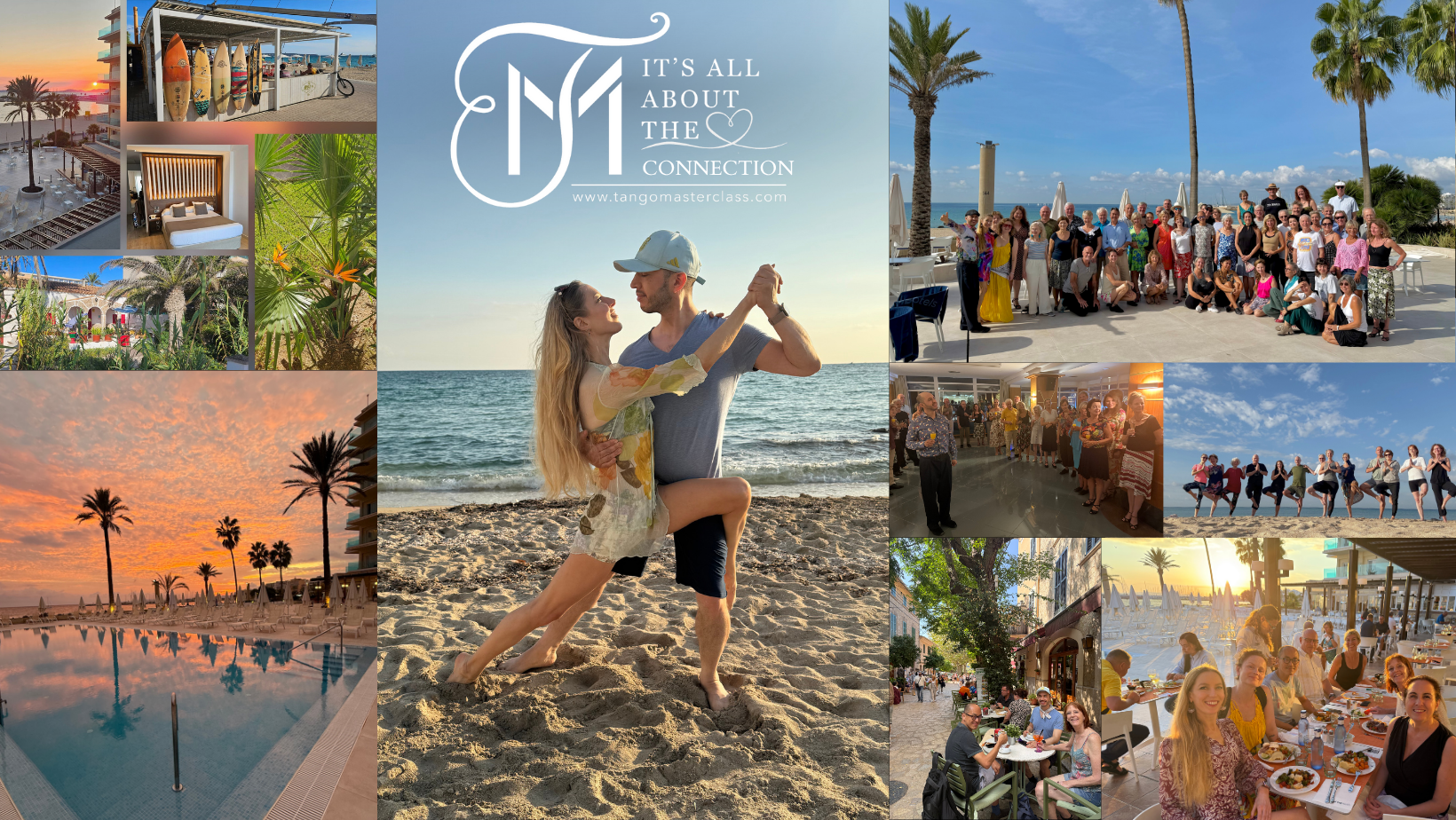Finally Together
Sep 06, 2021
Osvaldo Pugliese & Astor Piazzolla
6 September 2021 by Mariano Diaz Campos ©
Mariano is a certified journalist who writes about tango culture & history.

Musicians mentioned in this blog:
George Gershwin (1898 - 1937)
Julio de Caro (1899 – 1980)
Osvaldo Pugliese (1905 - 1995)
Anibal Troilo (1914 - 1975)
Astor Piazzolla (1921 -1992)
Luis Aravena
Finally Together
If you bring two of the biggest names in tango together, you are writing history. That is what Luis Aravena, musician, producer and theatreman, thought when he brought the two maestros of the Epoca de Oro of the tango to Amsterdam in 1989 to share the stage together in the Royal Theatre Carré. The only place and moment in history, where these two legends shared the stage. A unique event in the history of music & tango. The title of the concert was Finally Together.
When you think of the music of both artists, the most striking are their differences. Pugliese's music is often played at milongas, Piazzolla's music not so much. Pugliese is only played at tango radio stations, Piazzolla can also regularly be heard at the classical and jazz radio stations. Pugliese stayed within the genre Tango, Piazzolla created a new genre, combining elements of tango, classical and jazz.
Throughout his whole carreer Pugliese continued to make music suitable for and loved by tango dancers, whereas the younger Piazzolla separated himself from the connection between the dance and the music, and focussed mainly on music for listeners.
Although they have very notable differences, they both have their roots in the traditional tango. They both come from the same musical school, called Decareano, named after Julio de Caro, innovator of tango and inspirer of the musicians of the Golden Age of Tango.
The two maestros have an age difference of sixteen years, and that was notable when the fragile 84-year old Osvaldo Pugliese receives the immense applause the arises from the audience somewhat shyly and with a soft smile. And the seamingly fit and spry 68-year old Piazzolla, who keeps his arm around his colleague, and waves a bunch of flowers with the other hand like a victor's trophy.
The plan was to perform this concert again, but Astor Piazzolla passed away to tango heaven three years after this historical concert, in 1992, and Luis Aravena, the Dutch promoter of Latin American music, also passed away shortly afterwards. The one who made music for six years after this concert until his demise to tango heaven was Osvaldo Pugliese. This historic musical encounter is immortalized in the CD “Osvaldo Pugliese and Piazzolla - Finally Together”.
I was not part of the lucky ones who have witnessed this magical concert. Although I have been very blessed to be able to attend many concerts during the tour of Osvaldo Pugliese in The Netherlands, when my parents Lalo y Mirta Díaz were solo dance couple in his concert tour. In 1989 I was too shy to speak out my wishes, and the tickets for the concert in Carré were quickly sold out. Only years later I realized what it meant for the tango that these two musicians came together.
A great source of inspiration for both Osvaldo Pugliese and Astor Piazzolla, and for many other musicians, was Julio de Caro. We call the movement within tango music that was inspired by De Caro Decariano.
Who was Julio de Caro, this innovator of tango music? And why did his music mean so much to tango music and especially to the musicians of the Epoca de Oro, the Golden Age of tango?
Julio de Caro and his orchestra dared to introduce revolutionary musical applications in music in the 1920s. Taken into account, without considering the other musical innovations as unimportant, there are four elements: elegant style, the violin melody that seems to walk through the music, complex piano parts by Francisco de Caro, Julio's brother, use of syncopation and space for soloists within the orchestra; just think of final variations. Julio de Caro was also a big fan of jazz music and had previously been to New York to get to know this African-American music. This meant that the approach of the melody lines was used more loosely in his music than was previously known in the tango.
Osvaldo Pugliese was immediately impressed by Julio De Caro as a teenager. As a seventeen-year-old musician Pugliese had written the tango Recuerdo in the style of Julio De Caro. Can you image how proud Pugliese has felt, when Julio De Caro decided to arrange and even record Pugliese's composition.
Astor Piazzolla grew up in New York and was deeply inspired by the music of blues and jazz musician George Gershwin. As a young bandoneonist, Piazzolla played in the orchestra of Anibal Troilo, also an orchestra that played in Decariano style. In Troilo's orchestra, Piazzolla was given the space to make special arrangements according to his own vision.
Astor Piazzolla was also very impressed with Pugliese's music. He has adopted many techniques in his own musical career. When Piazzolla composed new experimental pieces and he created a new musical genre combined with tango in the fifties and sixties, many were critical about his work. When Piazzolla was asked by journalists why he was so experimental, he laughed off this question with the answer: 'Me experimental? No, that was Pugliese. I just imitated him'.
Grateful for their art
Two legends, both admired and respected all over the world, both by sendentary listeners and moving listeners (aka dancers).
Instead of comparing and discussing who is better, I prefer to enjoy the work of both geniusses just as much, in different moments of my life, in different moods. Forever grateful for the art they brought to this world.
More about these two legends in upcoming blogs.
Thank you for reading.
Yours truly,
Mariano Diaz Campos


